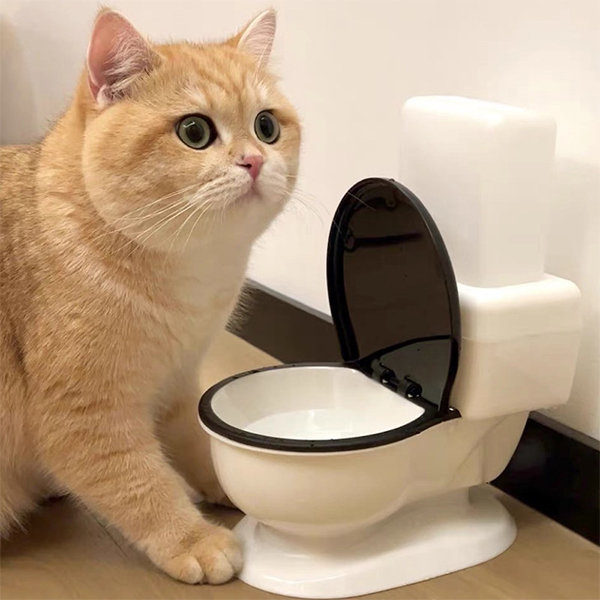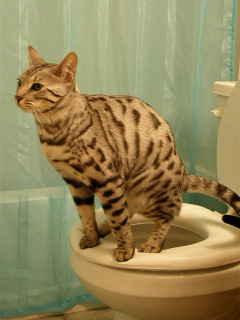The content which follows pertaining to How to Dispose of Cat Poop and Litter Without Plastic Bags is fairly motivating. Try it and draw your own personal ideas.

Introduction
As cat owners, it's important to bear in mind just how we throw away our feline close friends' waste. While it might appear convenient to flush cat poop down the toilet, this technique can have detrimental consequences for both the setting and human health and wellness.
Alternatives to Flushing
The good news is, there are much safer and a lot more liable means to dispose of pet cat poop. Consider the adhering to choices:
1. Scoop and Dispose in Trash
One of the most typical method of getting rid of cat poop is to scoop it right into a naturally degradable bag and throw it in the trash. Make certain to utilize a specialized trash inside story and get rid of the waste quickly.
2. Usage Biodegradable Litter
Go with naturally degradable cat litter made from products such as corn or wheat. These litters are eco-friendly and can be safely dealt with in the garbage.
3. Bury in the Yard
If you have a backyard, think about hiding feline waste in a designated area far from veggie gardens and water resources. Be sure to dig deep adequate to prevent contamination of groundwater.
4. Mount a Pet Waste Disposal System
Invest in a pet dog waste disposal system especially developed for pet cat waste. These systems use enzymes to break down the waste, minimizing smell and environmental influence.
Health Risks
Along with environmental issues, purging cat waste can likewise pose health and wellness threats to humans. Cat feces may contain Toxoplasma gondii, a parasite that can create toxoplasmosis-- a potentially serious health problem, especially for pregnant ladies and individuals with damaged body immune systems.
Ecological Impact
Purging pet cat poop introduces damaging microorganisms and bloodsuckers into the supply of water, positioning a significant threat to marine communities. These pollutants can negatively impact marine life and compromise water quality.
Conclusion
Accountable family pet possession prolongs past supplying food and shelter-- it also involves correct waste monitoring. By avoiding purging feline poop down the bathroom and choosing alternate disposal methods, we can minimize our ecological impact and secure human health.
Why Can’t I Flush Cat Poop?
It Spreads a Parasite
Cats are frequently infected with a parasite called toxoplasma gondii. The parasite causes an infection called toxoplasmosis. It is usually harmless to cats. The parasite only uses cat poop as a host for its eggs. Otherwise, the cat’s immune system usually keeps the infection at low enough levels to maintain its own health. But it does not stop the develop of eggs. These eggs are tiny and surprisingly tough. They may survive for a year before they begin to grow. But that’s the problem.
Our wastewater system is not designed to deal with toxoplasmosis eggs. Instead, most eggs will flush from your toilet into sewers and wastewater management plants. After the sewage is treated for many other harmful things in it, it is typically released into local rivers, lakes, or oceans. Here, the toxoplasmosis eggs can find new hosts, including starfish, crabs, otters, and many other wildlife. For many, this is a significant risk to their health. Toxoplasmosis can also end up infecting water sources that are important for agriculture, which means our deer, pigs, and sheep can get infected too.
Is There Risk to Humans?
There can be a risk to human life from flushing cat poop down the toilet. If you do so, the parasites from your cat’s poop can end up in shellfish, game animals, or livestock. If this meat is then served raw or undercooked, the people who eat it can get sick.
In fact, according to the CDC, 40 million people in the United States are infected with toxoplasma gondii. They get it from exposure to infected seafood, or from some kind of cat poop contamination, like drinking from a stream that is contaminated or touching anything that has come into contact with cat poop. That includes just cleaning a cat litter box.
Most people who get infected with these parasites will not develop any symptoms. However, for pregnant women or for those with compromised immune systems, the parasite can cause severe health problems.
How to Handle Cat Poop
The best way to handle cat poop is actually to clean the box more often. The eggs that the parasite sheds will not become active until one to five days after the cat poops. That means that if you clean daily, you’re much less likely to come into direct contact with infectious eggs.
That said, always dispose of cat poop in the garbage and not down the toilet. Wash your hands before and after you clean the litter box, and bring the bag of poop right outside to your garbage bins.
https://trenchlesssolutionsusa.com/why-cant-i-flush-cat-poop/

Hopefully you liked our section on How to Dispose of Cat Poop and Litter Without Plastic Bags. Thanks so much for spending some time to read our post. Appreciated our article? Please share it. Help others discover it. I praise you for your time. Please come visit our blog back soon.
Book Maintenance